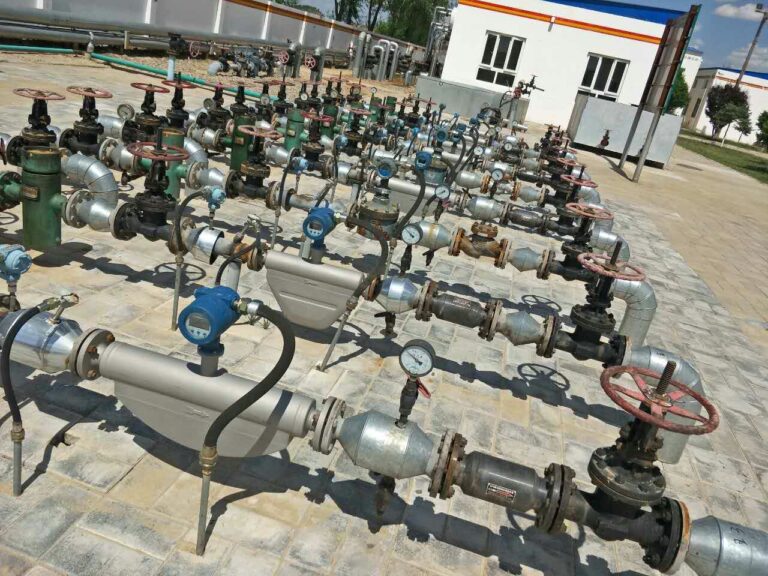Mass flow meters are crucial in various industries for measuring the mass flow rate of fluids. They are known for their high accuracy and reliability, especially in applications where measuring the actual mass of the fluid is essential, such as in chemical, pharmaceutical, and food industries. However, to ensure precise measurements, mass flow meters also have installation requirements, including specific lengths of straight pipe before and after the meter to ensure stable flow conditions. Below, we outline the key considerations and recommended guidelines for straight pipe installation with mass flow meters.

1. Why Straight Pipe Sections Are Essential for Mass Flow Meters
Mass flow meters, especially Coriolis and thermal mass flow meters, are highly sensitive to the flow profile of the fluid passing through them. Any turbulence or swirl can disrupt the flow pattern, impacting the meter’s ability to accurately measure mass flow. Straight pipe sections before and after the mass flow meter help stabilize the flow, ensuring that the fluid reaches the sensor without disturbances.
In mass flow measurement, ensuring a fully developed, steady flow profile is essential. By providing adequate straight pipe sections, the flow is allowed to stabilize, reducing the risk of measurement errors and ensuring that the mass flow meter can operate at peak accuracy.

2. Upstream Straight Pipe Requirements
The upstream (inlet) straight pipe section is critical to allow the flow profile to settle before reaching the mass flow meter. The required length of the upstream pipe depends on the level of disturbance in the fluid flow. Here are some general guidelines:
- Basic Requirement: For most applications, a minimum of 5 times the pipe diameter (5D) is recommended as the upstream straight pipe section. This helps eliminate minor disturbances and ensures consistent readings.
- Significant Upstream Disturbances: In cases where there are upstream disturbances such as bends, valves, or reducers near the meter, a longer upstream straight section may be required, up to 10D or more, to achieve steady flow conditions.
These recommendations help ensure that any distortions caused by upstream components are minimized, allowing the mass flow meter to read accurately.

3. Downstream Straight Pipe Requirements
While the downstream (outlet) straight pipe section is generally less critical than the upstream section, it still plays a role in stabilizing the flow after measurement. In some cases, downstream disturbances can reflect back into the measurement area, potentially affecting accuracy:
- Basic Requirement: A minimum of 3 times the pipe diameter (3D) is generally sufficient for the downstream straight pipe length.
- Sensitive Applications: For high-precision applications or where significant downstream disturbances (such as valves or pumps) are present, a longer downstream section of up to 5D may be recommended.

4. Installation Reference Table
The following table provides a quick reference for recommended straight pipe lengths based on common upstream and downstream disturbances when installing a mass flow meter:
| Upstream Disturbance Type | Recommended Upstream Straight Pipe Length | Recommended Downstream Straight Pipe Length |
|---|---|---|
| No Disturbance | 5D | 3D |
| Single 90° Elbow | 5D to 10D | 3D |
| Two 90° Elbows (Same Plane) | 8D | 3D |
| Two 90° Elbows (Different Planes) | 10D | 3D |
| Reducer or Expander | 5D to 8D | 3D |
| Valve (Control or Throttle) | 10D | 3D to 5D |
| Pumps or Compressors (High Turbulence) | 10D to 15D | 5D |
| Flow Conditioner Installed | 3D | 3D |
Notes:
- D represents the inner diameter of the pipe.
- Upstream Length Variability: The upstream length can vary based on the disturbance level, particularly in sensitive or high-precision applications.
- Downstream Length: The downstream requirement is generally shorter but may need to be extended in cases of significant downstream disturbances.

5. Additional Considerations: Flow Disturbances and Flow Conditioners
In addition to straight pipe lengths, certain other factors can impact the accuracy of a mass flow meter:
- Bends and Elbows: Upstream bends, particularly in different planes, can create swirling effects that disrupt the mass flow meter’s accuracy. If elbows are unavoidable, it may be helpful to install flow conditioners or increase the length of the straight pipe sections.
- Valves and Pumps: Control valves or pumps close to the meter can create fluctuations in flow rates. Positioning these devices further upstream or downstream from the meter or using flow conditioners can help minimize their impact.
- Flow Conditioners: In installations where space is limited, flow conditioners or straightening vanes can be used to create a uniform flow profile without requiring long straight sections of pipe.

6. Importance of Following Manufacturer and Industry Standards
Different mass flow meter types, such as Coriolis and thermal meters, may have specific installation requirements. Manufacturers often provide guidelines for straight pipe lengths, which should be followed for optimal accuracy. Additionally, industry standards, such as those provided by ISO and ASME, can offer reliable, tested guidance.

7. Conclusion
The accuracy of mass flow meters is heavily influenced by the stability of the flow profile, which can be maintained through proper installation with adequate straight pipe lengths. By adhering to general guidelines—5D to 10D upstream and 3D to 5D downstream—alongside additional flow conditioning techniques, users can optimize mass flow meter performance and maintain the reliability of their measurements.
